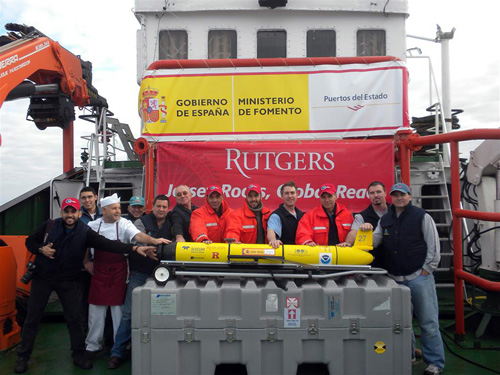Underwater Glider Scarlet Knight Opens Up New World of Ocean Technology
The first-ever 7,300-mile Atlantic Ocean crossing by an unmanned underwater glider is opening up a new world of ocean technology. A ceremony on Dec. 9 in Baiona, Spain, will celebrate the partnership effort among the U.S. interagency Integrated Ocean Observing System (IOOS) through Rutgers University, NOAA, Puertos Del Estado (Spanish Port Authority), the National Oceanographic Partnership Program, and other European partners.
The glider, launched off the coast of New Jersey last April, repeatedly dove to depths of up to 200 meters to collect data including temperature, salinity and density. Scientists correlate these data with those from satellite imagery and altimetry, radar systems and seafloor and buoy-mounted sensors to get a more detailed view of a particular patch of ocean in near real time. The glider’s constant motion offers a more comprehensive view of ocean conditions in time and space than the static measurements usually taken from the deck of a ship.
The glider was built with custom upgrades that allowed it to dive deeper, track battery life and minimize fouling of instruments due to marine growth. Oceanography undergraduates at Rutgers University were significantly involved in this mission as part of their education program.
Nicknamed the Scarlet Knight, the 7 foot-long, 135-pound glider traversed the ocean over 221 days. A similar attempt was made last year, but that glider was lost around the Azores.
Source: NOAA
Related Posts: Travel in Luxury – The Best Underwater Hotels

Subscribe for Daily Maritime Insights
Sign up for gCaptain’s newsletter and never miss an update
— trusted by our 109,094 members

Get The Industry’s Go-To News
Subscribe to gCaptain Daily and stay informed with the latest global maritime and offshore news

 Join The Club
Join The Club









